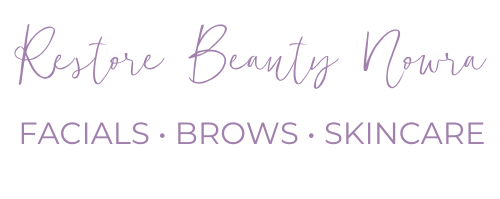The best way to exfoliate your skin
Why exfoliation is good for your skin and how to choose the best way for you.
You’ve probably heard that exfoliation is essential for healthy, glowing skin. But do you know why exfoliation is good for your skin and how to do it?
This is what you need to know to choose the best way to exfoliate your skin and how to do it.
Exfoliation means removing dead skin cells to reveal the younger, more hydrated cells below. This is a natural skin process that slows as we age. Regular exfoliation will help to speed up cell renewal and prevent your skin from looking dull and tired and feeling dry.
The key benefits of regular exfoliation are:
Gently remove dead skin cells
Boost skin cell renewal
Clear clogged pores and blackheads
Fade acne discolouration and sunspots
Increase hydration to minimise the appearance of fine lines and wrinkles
Exfoliating can be as simple as using a face cloth to remove your cleanser, but you'll see a better result if you use an exfoliating product formulated to remove dead skin cells. Used according to directions, it won't damage your skin's natural moisture barrier. With regular use your skin texture will improve, fine lines will be minimised, and your skincare products will work more effectively.
But be aware that there can be too much of a good thing. Over-exfoliating can affect your skin health and damage the natural skin barrier.
Exfoliating too often or using harsh products may cause:
Dehydrated, flaking, red and inflamed skin
Dry, tight and shiny skin
Skin ageing due to inflammation
Cell damage
Stimulation of melanin activity that may result in hyperpigmentation (brown spots and patches)
Stinging and irritation
There are three main types of exfoliants for your skin: Acids, Enzymes and Manual.
I recommend an enzyme or manual exfoliant for home skincare. As acids work with your skin's ph levels, they need to be individually prescribed. A qualified facial therapist will do this during a professional facial.
You can learn more about Acid exfoliation treatments here.
How enzyme exfoliants work:
The top layer of your skin is dead cells that contain keratin protein making your skin feel rough to touch. Enzyme exfoliants dissolve these proteins to reveal smoother skin. Enzyme exfoliants are gentle and effective for all skin types. This no-scrub exfoliating action is also ideal for sensitive or breakout skin types.
Restore Skin Refining Enzyme Peel is an Aloe Vera based peel with a blend of natural fruit enzymes. Pomegranate, Papaya and Pineapple have been proven to exfoliate the dead skin layer effectively. This helps to minimise the appearance of wrinkles, age spots and fine lines. This enzyme mask is not only effective in refining your skin but is simple to use with one application for 5-10 minutes each week.
How manual exfoliants work:
Often called facial scrubs, manual exfoliants are products that contain small particles or beads. When massaged across your skin, they help by lifting off dry, dead skin cells. This leaves your skin looking smooth and feeling soft. Removing your cleanser with a face cloth is a gentle manual exfoliant.
When using a manual exfoliant, it's essential to let the product or cloth do the work. Don't apply pressure as you glide it over your skin.
Applying pressure or scrubbing with a manual exfoliant damages your skin.
An innovative scrub-to-mask exfoliant, Restore Superfood Exfoliating Mask is loaded with superfood ingredients. Raw Oats, Coconut Powder, Green Tea, Quinoa, Blueberry and Chia Seeds are used to buff away dead skin cells. It's also ideal for use as a nourishing mask - leave it on your skin for 5 minutes before rinsing off. Your skin will skin feeling purified and hydrated.
How to get the best results from your exfoliant, whether you choose an enzyme or a manual exfoliant or combine both :
Exfoliate 3 - 4 times a week.
Avoid over-exfoliating that can damage your skin's natural barrier.
If your skin starts to look shiny, you're overdoing it.
Don't scrub with a manual exfoliant, glide it over your skin without any pressure.
Microdermabrasion is another professional exfoliation that delivers results. Microdermabrasion is a gentle, effective skin resurfacing treatment with no downtime. It helps to even skin tone, exfoliate dull and dry skin, reduce the appearance of wrinkles and stimulate new cell growth. This results in smoother, hydrated skin.
I exfoliate my skin three times each week. I use the Skin Refining Enzyme Peel and Superfood Exfoliating Mask twice. I do it after my evening cleanses before nourishing my skin with Restore Night Elixir. I also have a Microdermabrasion or AHA peel regularly.
I hope you've found this helpful when it comes to choosing an exfoliant to add to your skincare routine.

